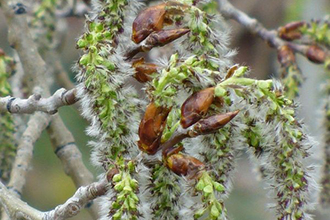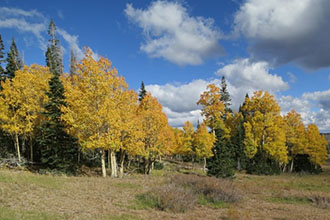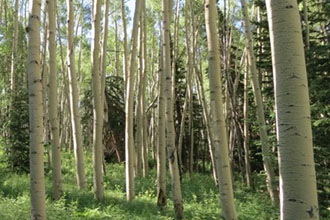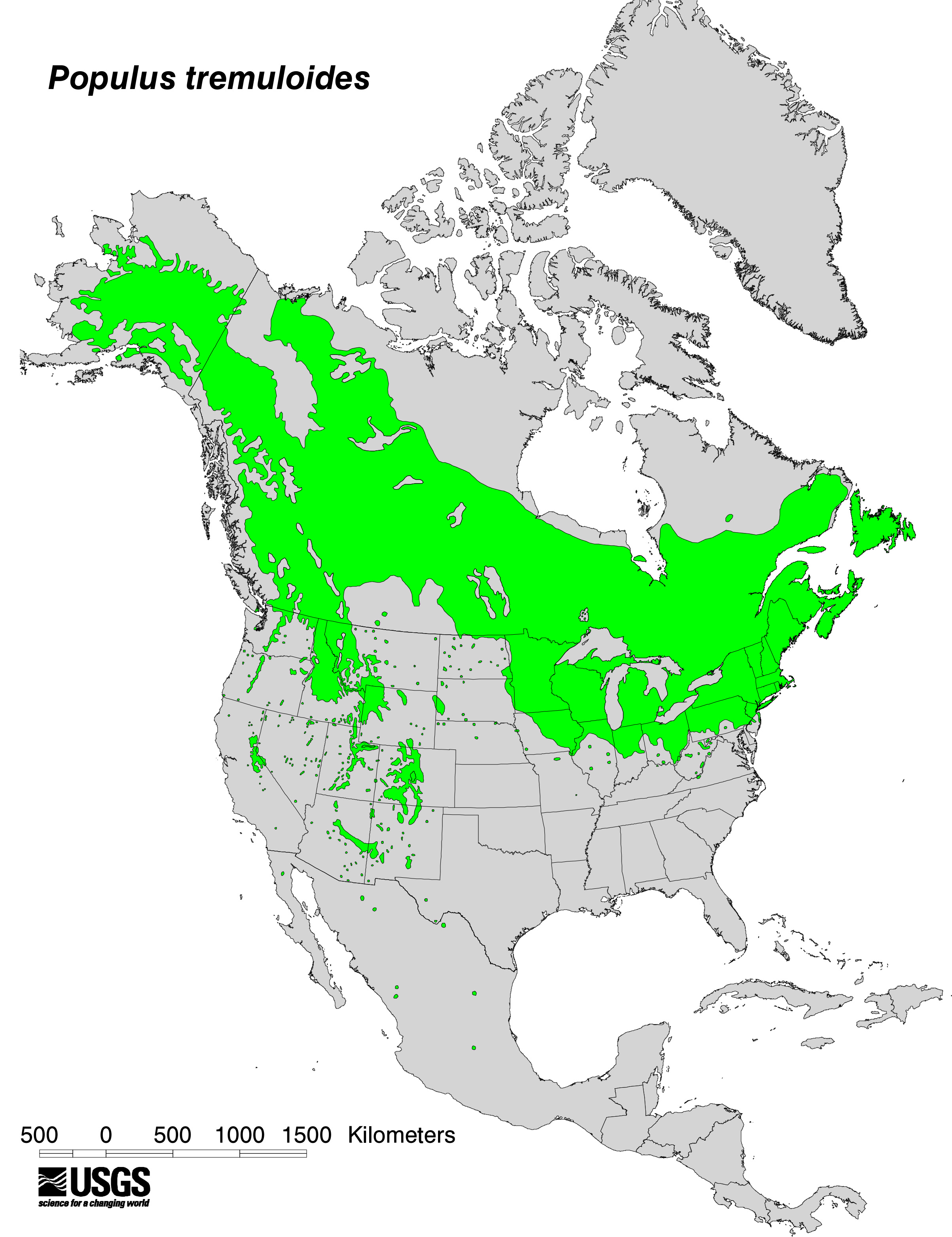Taxonomy: Kingdom - Plantae (plants). Subkingdom - Tracheobionta (vascular plants). Superdivision - Spermatophyta (seed plants). Division - Magnoliophyta (flowering plants). Class - Magnoliopsida (dicotyledons). Subclass - Dilleniidae. Order - Salicales. Family - Salicaceae (willow). Genus - Populus L. Species - Populus tremuloides Michx.
Ecology: Populus tremuloides is a native deciduous tree; it is the most widely distributed tree in North America. Populus tremuloides forms clones connected by a common parent root system. It is typically dioecious, with a given clone being either male or female. Some clones produce both stamens and pistils, however. Populus tremuloides stands may consist of a single clone or aggregates of clones. Clones can be distinguished by differences in phenology, leaf size and shape, branching habit, bark character, and by electrophoresis. In the West, Populus tremuloides stands are often even-aged, originating after a single top-killing event. Populus tremuloides is shade intolerant and generally does not regenerate well beneath its own canopy. Beyond that, there is no single, generalized pattern of succession in Populus tremuloides. Populus tremuloides is seral to conifers in most of its range in the West, and in some portions of its eastern range. Populus tremuloides readily colonizes after fire, clearcutting, or other disturbance. The names refer to the leaves, which in the slightest breeze tremble on their flattened leafstalks. The soft smooth bark is sometimes marked by bear claws. A pioneer tree after fires and logging and on abandoned fields, it is short-lived and replaced by conifers. Sometimes planted as an ornamental. Principal uses of the wood include pulpwood, boxes, furniture parts, matches, excelsior, and particle-board. The twigs and foliage are browsed by deer, elk, and moose, also by sheep and goats. Beavers, rabbits, and other mammals eat the bark, foliage, and buds, and grouse and quail feed on the winter buds.



